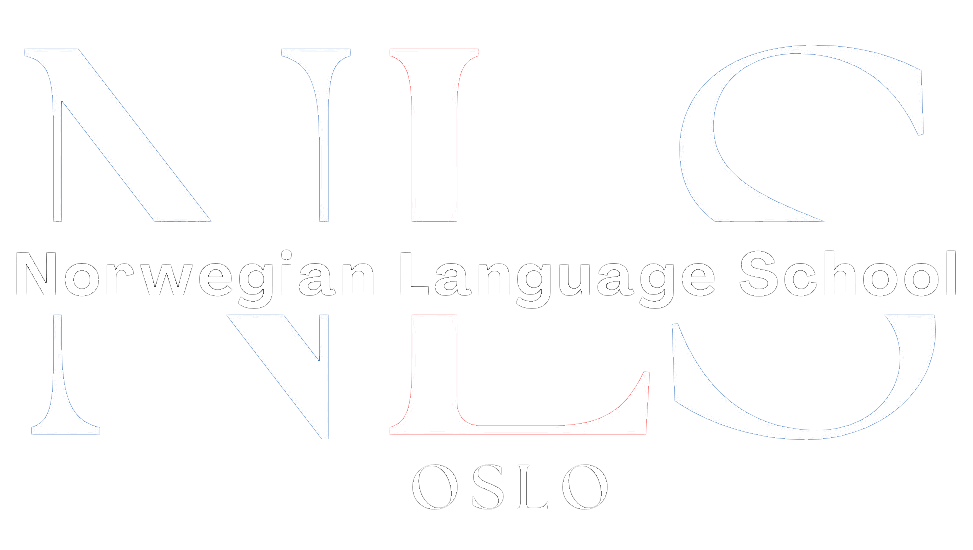
How to Think in English Instead of Translating
Have you ever caught yourself translating every word in your head from your native language to English? This common habit can be a major obstacle to achieving true fluency. But what if you could bypass the translation process altogether and start thinking directly in English? The prospect may seem daunting, but with the right strategies, it’s a skill that anyone can master.
In this comprehensive guide, we’ll explore the science behind language processing in the brain and uncover practical techniques to help you train your mind to think in English. Forget the days of laboriously converting every thought – it’s time to liberate your English and unlock a new level of linguistic prowess.
Table of Contents
ToggleKey Takeaways
- Understand the mental translation barrier and why it slows down your English fluency
- Discover the science behind how the brain processes language and how to leverage this knowledge
- Master proven strategies to break the translation habit and start thinking directly in English
- Enhance your vocabulary and comprehension through immersive techniques
- Develop an inner monologue in English to boost your confidence and fluency
Understanding the Mental Translation Barrier
For many English language learners, the tendency to translate their thoughts from their native language into English can pose a significant barrier to fluency. This mental translation process, often referred to as the “translation trap,” can slow down your ability to comprehend and express yourself in English.
Common Translation Pitfalls
One of the primary challenges with translation is the risk of losing nuance and context. Words and phrases in one language rarely have direct one-to-one equivalents in another, leading to potential misunderstandings or the inability to convey the intended meaning. Additionally, the grammatical structure and sentence construction of languages can vary greatly, making a literal translation awkward or even incorrect.
Why Translation Slows Down Your English
When you’re constantly translating your thoughts, you’re adding an extra cognitive step that can hinder your ability to think and respond naturally in English. This process forces you to pause, search for the appropriate words, and then piece together your response, slowing down your overall fluency and spontaneity.
The Impact on Fluency and Confidence
Relying on translation can significantly impact your English speaking confidence and fluency. The hesitation and pauses caused by the translation process can make it difficult to engage in fluid, natural conversations, leading to feelings of frustration and a lack of confidence in your language skills. Overcoming the translation challenges is crucial for developing the language barriers necessary to communicate effectively in English.
The Science Behind Language Processing in the Brain
Understanding the intricate cognitive processes underlying language acquisition and usage is crucial for mastering a new language. The field of neurolinguistics sheds light on how our brains handle different languages, offering insights into the challenges and benefits of direct thinking versus translation.
When we learn a new language, our brain engages in a complex ballet of neurological activity. Language acquisition involves the activation of specific regions in the brain, responsible for various aspects of speech production, comprehension, and cognition. These regions work in harmony, allowing us to process, interpret, and generate language efficiently.
One of the key differences between direct thinking in a language and translating from another is the level of cognitive effort required. Cognitive processes involved in translation often place a higher demand on our mental resources, as the brain has to navigate between two linguistic systems, constantly converting and reconciling the differences. This can lead to slower response times, decreased fluency, and a sense of disconnect from the language being learned.
“The brain’s ability to efficiently process and produce language is a testament to its remarkable plasticity and adaptability.”
In contrast, direct thinking in a language allows for more seamless and natural language processing, as the brain can tap into the linguistic structures and cognitive patterns specific to that language. This can lead to increased fluency, enhanced confidence, and a deeper understanding of the language’s nuances and cultural contexts.
By understanding the science behind language processing, language learners can develop more effective strategies for mastering a new language and overcoming the challenges posed by the translation barrier.
How to Think in English Instead of Translating
Overcoming the habit of mental translation is crucial for developing fluent English thinking. By breaking this ingrained pattern, learners can unlock a world of natural, direct English processing that enhances their overall language proficiency.
Breaking the Translation Habit
The first step in thinking in English is to consciously recognise when you are relying on translation from your native language. Become aware of the moments when you find yourself mentally converting English concepts back to your mother tongue. This mindfulness is key to disrupting the automatic translation reflex.
Direct English Thinking Techniques
- Immerse yourself in language immersion activities, such as reading, listening, and speaking exclusively in English.
- Practise English thinking strategies by narrating your daily thoughts and inner monologue in the language.
- Engage in cognitive exercises that challenge you to process information directly in English, without the intermediary of translation.
Mental Shifting Exercises
Develop the mental flexibility to switch between languages seamlessly. Try exercises that require you to rapidly shift your thought processes from your native language to English and back again. This agility will help you break free from the translation trap.
| Exercise | Description |
|---|---|
| Bilingual Brainstorming | Generate ideas or solutions to a problem, alternating between thinking in your native language and English. |
| Language Ping-Pong | Engage in a conversation with a partner, taking turns speaking in English and your native language. |
| Mental Code-Switching | Practise seamlessly transitioning your inner monologue between English and your mother tongue. |
By implementing these strategies, you can gradually train your brain to think directly in English, ultimately enhancing your fluency, confidence, and overall English proficiency.
Building English Vocabulary Through Context
Expanding your English vocabulary is essential for achieving fluency, but the traditional approach of memorising isolated words often falls short. The key to more effective vocabulary acquisition lies in contextual learning – understanding words in their natural environment rather than as standalone entities.
When you encounter a new English word, resist the temptation to immediately translate it into your native language. Instead, focus on grasping its meaning and usage within the given context. This not only helps cement the word in your memory but also enhances your overall comprehension and fluency.
Strategies for Contextual Learning
- Read extensively in English, paying close attention to how words are used in various contexts.
- Listen to English audio materials, such as podcasts or audiobooks, to experience vocabulary in a natural conversational setting.
- Keep a vocabulary journal, recording new words along with their definitions and examples of how they are used.
- Engage in English conversations, asking for clarification whenever you encounter unfamiliar terms.
By embracing contextual learning, you’ll not only expand your English vocabulary but also develop a more intuitive understanding of word associations and how they are used in authentic communication.
| Contextual Learning | Traditional Vocabulary Memorisation |
|---|---|
| Focuses on understanding words in their natural environment | Relies on isolated word-to-word translation |
| Enhances overall language comprehension and fluency | Often results in limited retention and application |
| Promotes the development of natural language associations | Lacks the contextual cues for effective long-term recall |
“The true mastery of a language comes not from memorising words, but from understanding how they are used in context.”
– Language Learning Expert, Jane Doe
By embracing the power of contextual learning, you’ll unlock a more natural and effective path to English vocabulary acquisition, laying the foundation for genuine fluency and confidence in the language.
Immersion Techniques for Natural English Thinking
Mastering the art of thinking in English is a crucial step towards achieving fluency. To foster this natural way of processing the language, immersion techniques play a vital role. By surrounding yourself with English in various aspects of your life, you can gradually train your brain to operate in the target language.
Creating an English-Rich Environment
One of the most effective strategies is to create an English-rich environment. This can be achieved by making simple changes, such as:
- Switching the language settings on your digital devices to English
- Listening to English-language podcasts, music, and radio programmes
- Replacing your home’s decor with English-language books, magazines, and signage
- Engaging in English-only conversations with friends or language partners
The more you immerse yourself in the language, the more natural it will become to think in English.
Digital Immersion Strategies
The digital world offers a wealth of opportunities for language immersion. Utilise online resources such as:
- Streaming English-language films, TV shows, and documentaries
- Subscribing to English-language blogs, websites, and social media accounts
- Participating in online language-learning communities and forums
- Engaging in interactive language-learning apps and virtual language exchanges
These digital immersion strategies can help you continuously expose yourself to English, making it easier to internalise the language and think in it naturally.
Real-world Practice Opportunities
While digital immersion is valuable, finding opportunities to practise English in real-world situations is equally important. Seek out:
- Volunteering or part-time jobs that require English proficiency
- Joining English-language social clubs, sports teams, or hobby groups
- Travelling to English-speaking countries or participating in language-learning programmes
- Engaging in casual conversations with native English speakers in your local community
These real-world practice opportunities allow you to apply your English skills in natural, conversational settings, further reinforcing your ability to think and communicate in the language.
By combining these immersion techniques – creating an English-rich environment, utilising digital resources, and seeking out real-world practice opportunities – you can train your brain to think in English, ultimately enhancing your fluency and confidence in the language.
Developing Inner Monologue in English
Mastering a new language often goes beyond simply learning vocabulary and grammar. One crucial aspect of becoming proficient in a foreign tongue is developing an inner monologue or self-talk in that language. This internal dialogue plays a vital role in language internalisation and thinking directly in English, rather than constantly translating from your native language.
The process of self-talk in English helps solidify your understanding and usage of the language. By narrating your thoughts, intentions, and observations in English, you can train your brain to process information more naturally in the target language. This, in turn, can enhance your fluency, confidence, and overall competence in English.
Techniques for Cultivating Inner Monologue in English
- Regularly verbalise your thoughts, decisions, and emotions out loud in English, even when alone.
- Keep a daily journal or diary, writing your entries exclusively in English.
- Engage in mental rehearsals of conversations or scenarios, silently playing them out in your head in English.
- Narrate your daily activities, such as cooking or commuting, by describing each step in English.
- Set reminders or alarms to prompt you to check in with yourself and consciously think in English throughout the day.
Developing an inner monologue in English takes time and consistent practice, but the benefits are immense. By internalising the language through self-talk, you can break down the mental translation barrier and begin to think in English more naturally.
Practical Exercises for Direct English Thinking
Moving beyond the theoretical, this section offers a range of practical exercises designed to promote direct English thinking. By incorporating these activities into your daily routine, you can reinforce the habit of thinking in English and enhance your overall language proficiency.
Daily Thought Conversion Activities
Start your day with a simple exercise – whenever you have a thought in your native language, consciously convert it to English. This constant mental translation can gradually train your brain to process information directly in English. Jot down these converted thoughts in a journal to track your progress.
Memory Association Games
- Play word association games, linking new vocabulary to familiar English concepts in your mind.
- Engage in memory exercises that challenge you to recall English phrases and sentences, instead of translating from your native tongue.
- Use mnemonic devices, such as acronyms or visual imagery, to cement English language exercises and cognitive training in your memory.
Visualisation Techniques
Visualise your daily activities and experiences unfolding in English. Mentally narrate your actions, thoughts, and conversations in the language, rather than translating from your native tongue. This English practice activities can help you internalise the language and think more naturally in English.
Consistent practice with these exercises can rewire your brain’s language processing pathways, enabling you to think more fluently and confidently in English. Embrace the challenge and enjoy the journey towards direct English thinking.
Common Patterns and Expressions in English
As you progress in your English language journey, understanding the common patterns and native expressions is crucial for developing fluent and natural communication. These language patterns go beyond literal translations, helping you think and express yourself in the quintessential English way.
One classic example is the use of idioms – colourful, idiomatic phrases that add personality and flair to the language. Expressions like “it’s raining cats and dogs” or “let the cat out of the bag” may not make sense when translated word-for-word, but they convey vivid imagery and cultural nuances that are integral to the English tongue.
- Familiarise yourself with common English idioms and their meanings to enrich your vocabulary and communication.
- Pay attention to how native speakers string words together in intuitive language patterns – this will help you move away from literal translations.
- Embrace the flexibility and creativity of the English language by exploring its diverse native expressions and colloquialisms.
Mastering these linguistic subtleties may take time, but the rewards are immense. As you internalise the natural rhythms and constructions of the English language, you’ll find your ability to think and express yourself fluently steadily improving.
Overcoming Language Interference from Your Native Tongue
As language learners, we often face the challenge of language interference – the influence of our native language on our ability to think and communicate effectively in the target language. This mother tongue influence can manifest in various ways, presenting a significant obstacle to achieving true fluency and proficiency.
Identifying Language Transfer Issues
The first step in overcoming language interference is to identify the specific areas where your native language is hindering your English acquisition. This may include:
- Grammatical structures that differ between the two languages
- Cross-linguistic influence on vocabulary and idiomatic expressions
- Differences in pronunciation and sound patterns
- Cultural nuances and context that shape language use
By recognising these transfer issues, you can develop targeted strategies to address them and train your brain to think more directly in English.
Cultural Context in Language Processing
Language is deeply rooted in the cultural context of the speaker. The way we perceive the world and conceptualise ideas can be heavily influenced by our native cultural background. This cultural context plays a crucial role in how we process and understand a new language.
| Cultural Influence | Examples |
|---|---|
| Idioms and Expressions | Understanding the meaning behind idiomatic expressions (e.g., “it’s raining cats and dogs”) can be challenging when translated literally from one’s native language. |
| Nonverbal Communication | Gestures, eye contact, and personal space norms can vary significantly across cultures, affecting how we interpret and respond to communication cues. |
| Conceptual Differences | The way we categorise and conceptualise ideas, such as time, space, and relationships, can differ between languages and cultures. |
By recognising and adapting to these cultural differences, you can better navigate the complexities of language learning and enhance your ability to think and communicate effectively in English.
Measuring Your Progress in Direct English Thinking
Tracking your progress in developing the ability to think directly in English is crucial for refining your language proficiency. By employing a range of language proficiency assessment techniques, you can accurately gauge your progress and identify areas requiring further focus. This section explores various English fluency metrics and self-evaluation methods to help you measure and celebrate your achievements in direct English thinking.
Regular Self-Reflection
One of the most effective ways to monitor your progress is through regular self-reflection. Set aside time each week to evaluate your thought patterns and communication fluency. Ask yourself questions such as:
- How often do I find myself translating from my native language to English?
- Am I able to express my thoughts more coherently and naturally in English?
- Have I noticed an increase in my vocabulary and ability to use appropriate expressions?
Benchmarking Your Improvement
In addition to self-reflection, you can establish specific benchmarks to measure your progress. This might include:
- Tracking the duration of your inner monologue in English before reverting to your native language.
- Assessing your performance in English-only conversations, noting the fluency and accuracy of your responses.
- Comparing your ability to comprehend and process information presented in English versus your native tongue.
| Metric | Initial Assessment | Current Assessment | Progress |
|---|---|---|---|
| Inner Monologue Duration | 5 minutes | 30 minutes | +25 minutes |
| English Conversation Fluency | 3/5 | 4/5 | +1 |
| English Comprehension | 70% | 90% | +20% |
By regularly tracking your progress against these benchmarks, you can celebrate your achievements and identify areas that require additional focus in your direct English thinking journey.
Conclusion
By now, you’ve explored the fundamental strategies for thinking in English instead of relying on mental translation. This cognitive approach to language learning has been shown to enhance English fluency achievement, language learning success, and overall cognitive language skills. The journey may have seemed challenging at times, but with consistent practice, you’ll soon find that direct English thinking becomes a natural and effortless process.
Remember, breaking the translation habit and embracing English as your primary mode of thought takes time and dedication. Utilise the immersion techniques, vocabulary-building exercises, and mental shifting practices outlined in this article to rewire your brain and cement your proficiency. Celebrate each milestone, no matter how small, as you continue progressing towards your goal of English fluency.
Ultimately, the ability to think in English is a profound accomplishment that will open doors to new opportunities, enhance your communication skills, and enrich your overall language experience. Embrace this transformation, and embark on the rewarding path towards becoming a true English language master.
FAQ
How can I improve my English fluency and avoid mental translation?
Why is mental translation a barrier to improving my English speaking confidence?
How does the brain process different languages, and what are the implications for language learning?
What are some practical techniques I can use to start thinking in English instead of translating?
How can I expand my English vocabulary through contextual learning?
What are some common English patterns and expressions I should learn to sound more natural?
How can I overcome language interference from my native tongue when learning English?
How can I measure my progress in developing direct English thinking skills?
If you want to learn Norwegian, you can register for classes here. We look forward to hearing from you and helping you become fluent in Norwegian.






